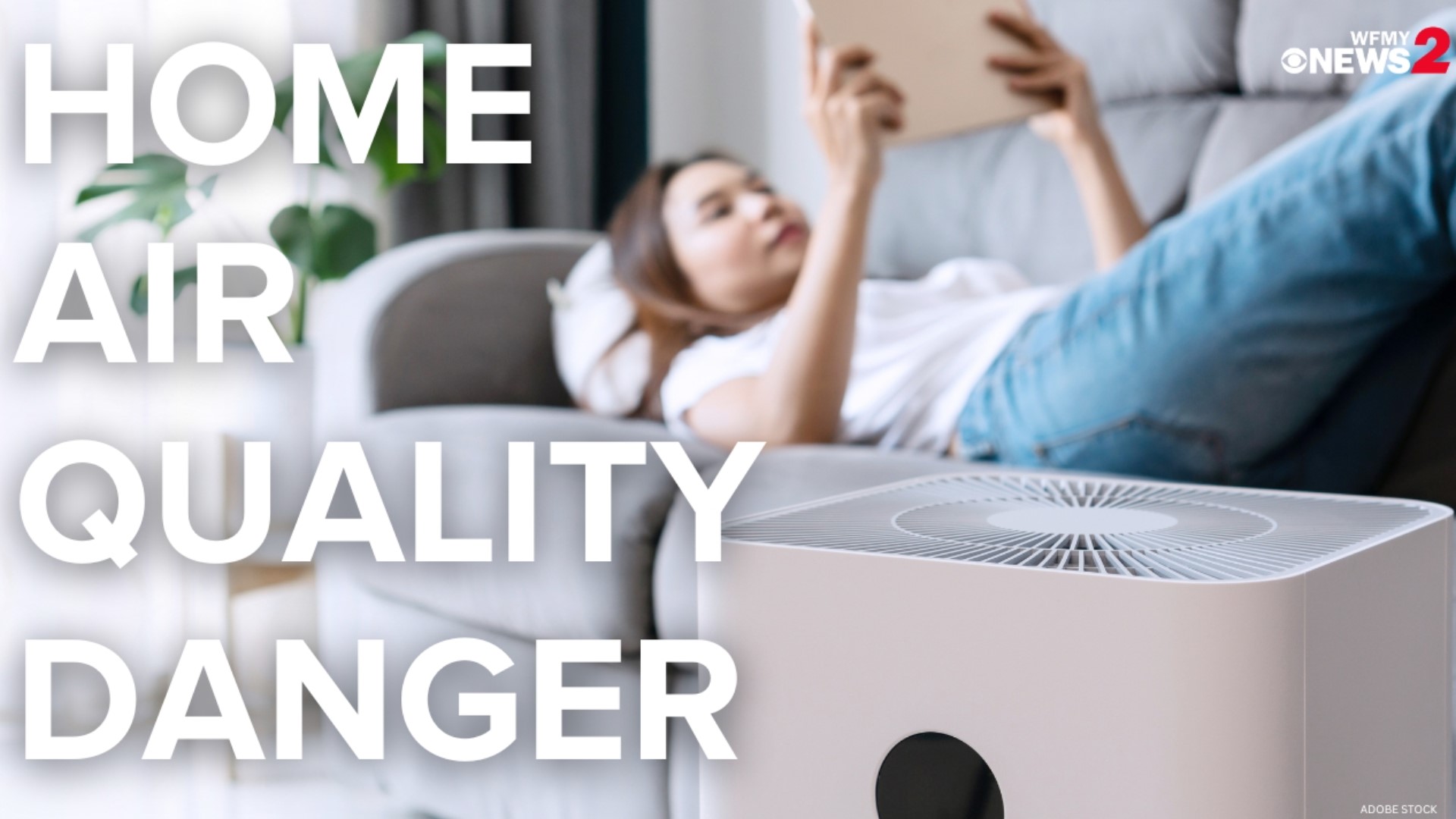GREENSBORO, N.C. — Believe it or not, the air quality inside your home can be worse than the air you breathe outside, especially in colder months when the windows and doors are closed. However, as Consumer Reports explains, there are some simple steps you can take to improve the air you breathe.
While newer, more tightly sealed home construction improves energy efficiency, Consumer Reports says it’s also partly to blame for indoor pollutants.
GAS STOVES
Where are they coming from? Gas stoves, for one thing. Tests by Consumer Reports have found that they’re a possible source of toxicity and are cause for concern.
"So what can you do? You should think about ventilation. Use your range hood while you’re cooking or open the window to get cleaner outside," said Paul Hope of Consumer Reports.
VOC'S
Other pollutants include volatile organic compounds (VOCs) emitted from cleaning agents, pesticides, aerosols, and even couches and carpets. They can irritate your throat, nose, and eyes, some may even cause cancer.
A solution? Try not to use some of the harsh chemicals out there to clean your home. If you do use them, again, ventilate by opening the windows.
Buy mattresses and furnishings that are made with natural fibers like cotton. To help keep your home dust-free, use a vacuum with a HEPA filter to trap contaminants, and clean or change the filters in your air conditioner.
Air purifiers can also help. Alen, Winix, and BlueAir models earn top marks in Consumer Reports tests and cost between $275 and $741.
MOLD
You’ll likely smell another pollutant: mold. Often caused by humidity, it can cause rashes, flu-like symptoms, and eye and lung irritation. Consider a dehumidifier. Consumer Reports highly rates models from Honeywell, Midea, and HomeLabs, and they cost between $200 and $320.
According to CR, this is what the recommendation is for cleaning up mold:
To mitigate mold, first find and fix the source of moisture, whether it’s a leaky roof, a poorly ventilated bathroom, or another problem. Then take steps to remove the mold, using water, detergent, or a disinfectant such as a diluted bleach solution, or by throwing away the mold-covered object.
The EPA recommends doing the job yourself if the mold-contaminated area is less than 10 square feet. Use protective equipment, such as an N95 mask, goggles, and gloves. (For more, see the EPA’s “A Brief Guide to Mold, Moisture, and Your Home.”) Larger-scale problems may require professional remediation.
If the mold stems from a recent weather disaster, you might be eligible for federal assistance to fix the problem.
CARBON MONOXIDE
So, what about carbon monoxide, the odorless, colorless, and sometimes fatal gas? Install a detector on every level of your home and outside each sleeping area.
RADON
Consumer Reports also recommends checking for radon, a radioactive gas that can seep into your home from water and soil. If your house was built around 1980 or before, check for asbestos and lead. You may want to work with a professional to see what options you have to make sure your home is safe.

